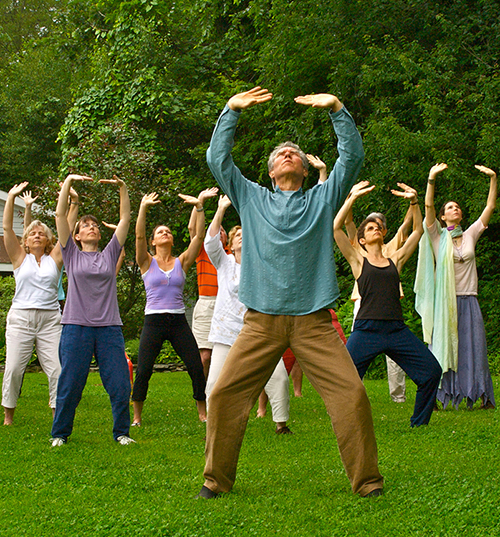
Many people make resolutions to exercise at the beginning of the new year. And unfortunately, while the goal is a good one to set, many people fall short or give up completely within a few weeks. There are many reasons why this happens. A very common excuse that I hear in my clinic is that “it’s too difficult”. That means different things to different people, but the bottom line is that people give up. But there is an effective form of exercise that is neither difficult, expensive nor time sucking. This is known as QiGong.
The art of Qi Gong dates back more than 5,000 years and is based on the principles used in acupuncture and traditional Chinese medicine. It is a form of light exercise that involves repeated movements, breath work, stretching, and increasing blood flow throughout the body. When each of these goals is achieved, the flow of energy in the body is restored.
The practice of QiGong is founded on the understanding of Yin / Yang and what is also known as the “Five Elements” theory. Qi (or chi) is considered vital energy which builds up and circulates throughout the body distributing nutrients. Those who practice QiGong seek to adjust the body, breath and mind, this bringing them into balance.
QiGong can help to reset the body to a neutral state by releasing what is blocking the flow of energy. There are a variety of techniques that can be used, but despite the different forms of QiGong, there are specific elements that are combined but may be used in different ways. For example, the body is regulated through posture. The mind is regulated through a focused concentration (meditation), quiet and relaxation. Breath is regulated by the movement of the body.
Our physical pain can often be a manifestation of stress or other emotional or mental challenges. It is important to find a healthy way to deal with these issues and QiGong can help people find an inner calm to help manage stress, anxiety, depression and negative thought patterns.
There are two main principles to master in QiGong. The first is posture. When practicing QiGong, it is important to have a posture that is relaxed and natural and allows for a smooth breathing pattern. It helps to quiet the mind and achieve a calm state. The most commonly performed postures are standing firm in one place with gentle arm movements and breathing combined or a conscious walking or moving the hands in time with breath.
The second principle to master is regulating and quieting the mind. This is an important discipline in QiGong and something not easily mastered by many because of the demands of life that can weigh on the mind. Being able to settle your mind, focus and tune out distractions is a goal and a benefit of practicing QiGong.
The fast-paced world we live in that demands so much of our time, thrives on stress and fast food and with too little sleep can have a devastating impact on the body and on our mental health. Regularly practicing QiGong retrains the body and mind to achieve a true state of relaxation. And in this calm state, the body can heal itself. There are many other benefits to practicing QiGong including increased strength, stamina, range of motion and flexibility. It can also improve immune system function, digestion and improve sleep quality. The mental benefits include increased concentration.
If you want to know more about the practice of Qi Gong, give us a call and learn how you can begin to integrate this practice into your daily routine. It won’t be long before you begin to see tremendous benefits.

